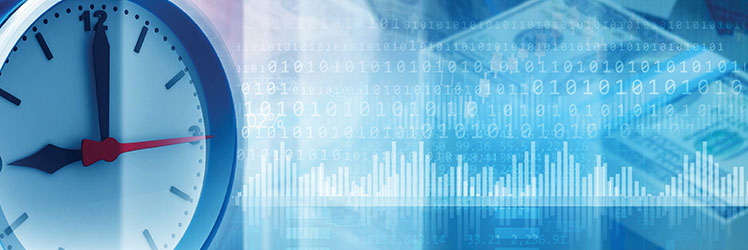Articles
AP Automation: Streamlining the Invoice Process
- By Andrew Deichler
- Published: 2/11/2020

Compiling paper invoices or Excel files sent via email can be an arduous process for accounts payable (AP). AP automation and electronic invoicing can simplify things.
PORTAL PROBLEMS
It’s quite common for suppliers to outsource the process to a third party who uploads invoices into a portal, and then the buyer’s AP department has to then go in and manually retrieve and download it. Typically, your suppliers won’t all be using the same portal, which creates huge inefficiencies if you are the buyer. If you have 10 suppliers using 10 different portals, then you need 10 logins and 10 places you have to pull from. That’s not too bad, but what if you have 100 or 1,000 suppliers? “When you're a big company, this becomes unmanageable and it doesn't scale,” said a consultant who has worked in payment systems and treasury operations for more than 15 years. “So even if you aren’t getting invoices in the mail or by email, these portals are equally difficult; it all creates manual processes for accounts payable.”
To improve the process somewhat, many technology vendors offer add-on tools to AP or ERP systems, such as optical character recognition (OCR) readers. These tools attempt to read the data off of the invoice and then enter it into AP. This isn't really automating it, but it is more efficient than relying on an employee to punch it in manually.
However, a key problem with OCR solutions is that every supplier’s invoice looks different. If you have a company that you're doing business with all the time, you might need to build a template for what their invoice looks like so that the OCR reader can read them easily. Again, if you have 10 major suppliers, that’s no big deal. But if you’re an auto manufacturer with 1,000 suppliers, it would take a lot of time to build that template. Though once you do, every invoice you have can be read.
Accuracy can be a big problem for OCR readers; a lot of them are inherently inaccurate in how they read an invoice—even if a template has been built out. And if an OCR solution reads an invoice improperly, it gets kicked out as an exception and then an employee has to do a manual exception process before it can get to AP.
Still, the payments consultant recommends OCR solutions for high volume situations. “They’re very effective; they can eliminate manual keying,” she said. “Those solutions are good for what they do. They help eliminate a data entry problem.”
There are also add-on solutions that vendors offer for screen scraping invoice portals. So instead of manually downloading the invoices from multiple portals, you can outsource that process to a vendor who will go in and gather that data on your behalf. These vendors have a robotic process automation (RPA) script process that logs into the different portals, does a screen scrape of the data on the invoice, and then sends it back to the company.
ACHIEVING STP
But because companies are outsourcing this responsibility and not getting the invoice data itself, there are a lot of extra costs they have to deal with. And what’s more, this only deals with a portion of the invoice problem; organizations are still left with some invoices that they have to handle manually. Some companies even outsource their entire AP department to a third part. When they do this, they're not really solving a problem, they’re just shifting it to somebody else.
The consultant noted that many of these solutions are highly useful to AP, but they don't address the need for automation, and they don't achieve STP. Many invoicing solutions are very efficient for the supplier, but they're not efficient for the buyer.
This is where the e-invoicing comes in. “With e-invoicing, what you get is structured data,” she said. “When you get structured data, you can automate that and then you can get straight through processing. You still have to approve the invoice. It has to get into AP. It still has to be approved, but it eliminates the biggest pain point, which is getting the data into accounts payable to start with.”
But again, it comes back to standardization. The data needs to be structured; it has to adhere to some kind of standard, and there are a lot of different standards out there. “You still have to deal with the question of, ‘Is it structured and what's the standard that's being used?’ There are very, very few solutions out there in the market today for doing structured e-invoicing,” she said. “The solutions that are out there, and a lot of the EDI invoicing and solutions with the value-added networks (VANs) that do this stuff, they work really well for enterprise-level corporations with their major suppliers.”
She noted that the “heavyweights” like major manufacturers see the value in implementing these e-invoicing solutions with their suppliers because of the volume of invoices. “The automation pays for itself, time and time over,” she said.
For further insights, download the AFP Payments Guide, E-Invoicing and AP Automation: Streamlining Payments Operations, underwritten by MUFG Union Bank.
Copyright © 2024 Association for Financial Professionals, Inc.
All rights reserved.

